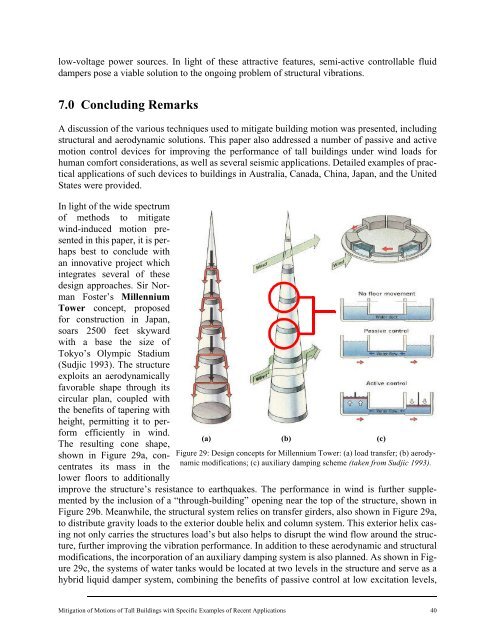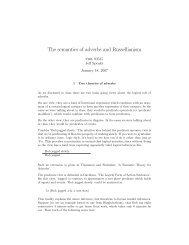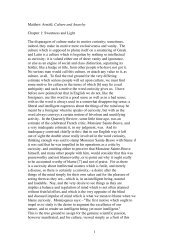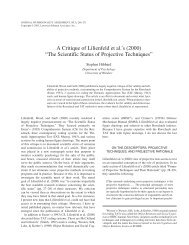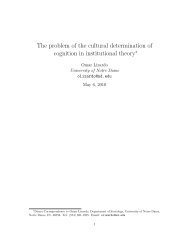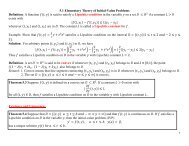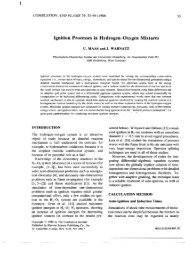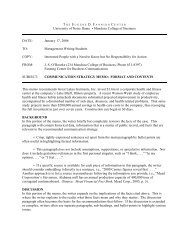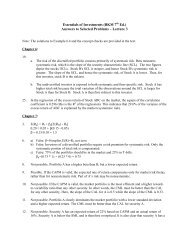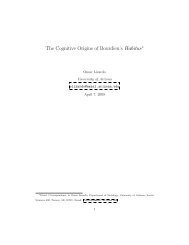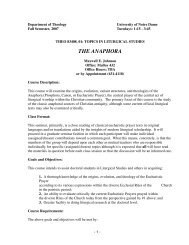Mitigation of Motions of Tall Buildings with Specific Examples of ...
Mitigation of Motions of Tall Buildings with Specific Examples of ...
Mitigation of Motions of Tall Buildings with Specific Examples of ...
You also want an ePaper? Increase the reach of your titles
YUMPU automatically turns print PDFs into web optimized ePapers that Google loves.
low-voltage power sources. In light <strong>of</strong> these attractive features, semi-active controllable fluid<br />
dampers pose a viable solution to the ongoing problem <strong>of</strong> structural vibrations.<br />
7.0 Concluding Remarks<br />
A discussion <strong>of</strong> the various techniques used to mitigate building motion was presented, including<br />
structural and aerodynamic solutions. This paper also addressed a number <strong>of</strong> passive and active<br />
motion control devices for improving the performance <strong>of</strong> tall buildings under wind loads for<br />
human comfort considerations, as well as several seismic applications. Detailed examples <strong>of</strong> practical<br />
applications <strong>of</strong> such devices to buildings in Australia, Canada, China, Japan, and the United<br />
States were provided.<br />
In light <strong>of</strong> the wide spectrum<br />
<strong>of</strong> methods to mitigate<br />
wind-induced motion presented<br />
in this paper, it is perhaps<br />
best to conclude <strong>with</strong><br />
an innovative project which<br />
integrates several <strong>of</strong> these<br />
design approaches. Sir Norman<br />
Foster’s Millennium<br />
Tower concept, proposed<br />
for construction in Japan,<br />
soars 2500 feet skyward<br />
<strong>with</strong> a base the size <strong>of</strong><br />
Tokyo’s Olympic Stadium<br />
(Sudjic 1993). The structure<br />
exploits an aerodynamically<br />
favorable shape through its<br />
circular plan, coupled <strong>with</strong><br />
the benefits <strong>of</strong> tapering <strong>with</strong><br />
height, permitting it to perform<br />
efficiently in wind.<br />
The resulting cone shape,<br />
shown in Figure 29a, concentrates<br />
its mass in the<br />
lower floors to additionally<br />
(a) (b) (c)<br />
Figure 29: Design concepts for Millennium Tower: (a) load transfer; (b) aerodynamic<br />
modifications; (c) auxiliary damping scheme (taken from Sudjic 1993).<br />
improve the structure’s resistance to earthquakes. The performance in wind is further supplemented<br />
by the inclusion <strong>of</strong> a “through-building” opening near the top <strong>of</strong> the structure, shown in<br />
Figure 29b. Meanwhile, the structural system relies on transfer girders, also shown in Figure 29a,<br />
to distribute gravity loads to the exterior double helix and column system. This exterior helix casing<br />
not only carries the structures load’s but also helps to disrupt the wind flow around the structure,<br />
further improving the vibration performance. In addition to these aerodynamic and structural<br />
modifications, the incorporation <strong>of</strong> an auxiliary damping system is also planned. As shown in Figure<br />
29c, the systems <strong>of</strong> water tanks would be located at two levels in the structure and serve as a<br />
hybrid liquid damper system, combining the benefits <strong>of</strong> passive control at low excitation levels,<br />
<strong>Mitigation</strong> <strong>of</strong> <strong>Motions</strong> <strong>of</strong> <strong>Tall</strong> <strong>Buildings</strong> <strong>with</strong> <strong>Specific</strong> <strong>Examples</strong> <strong>of</strong> Recent Applications 40


